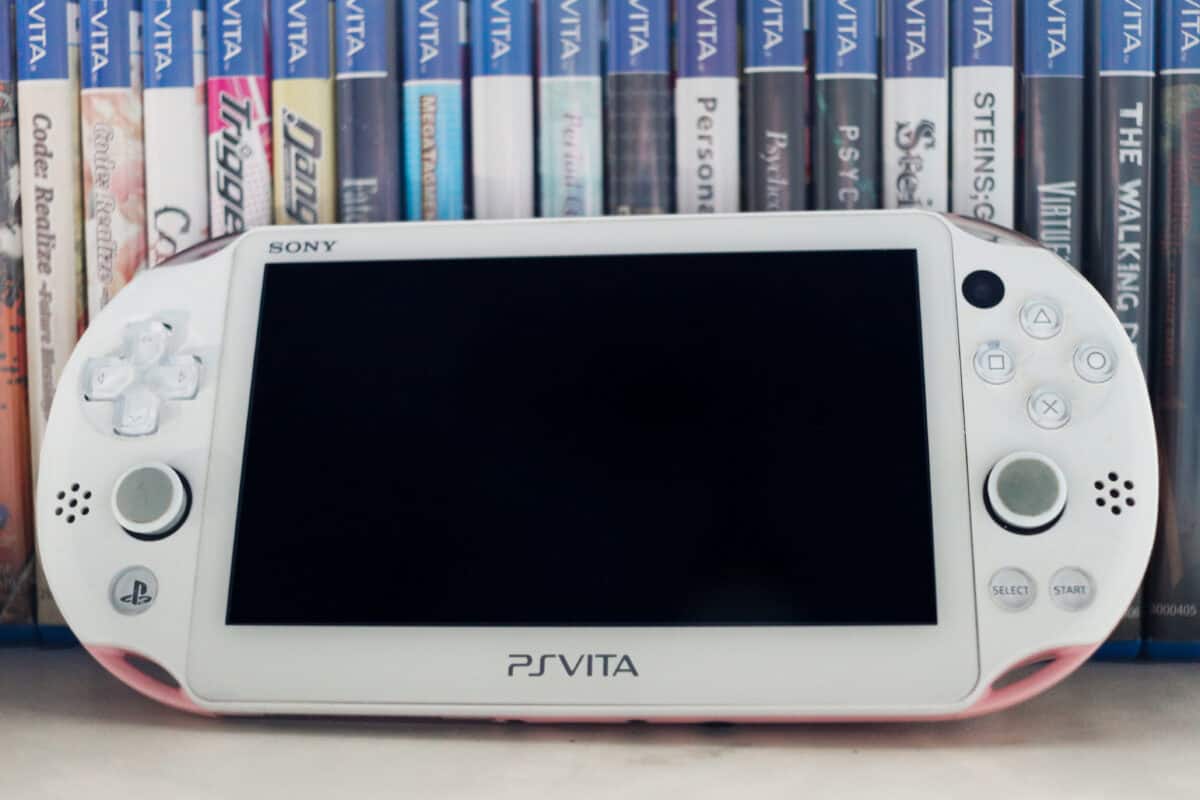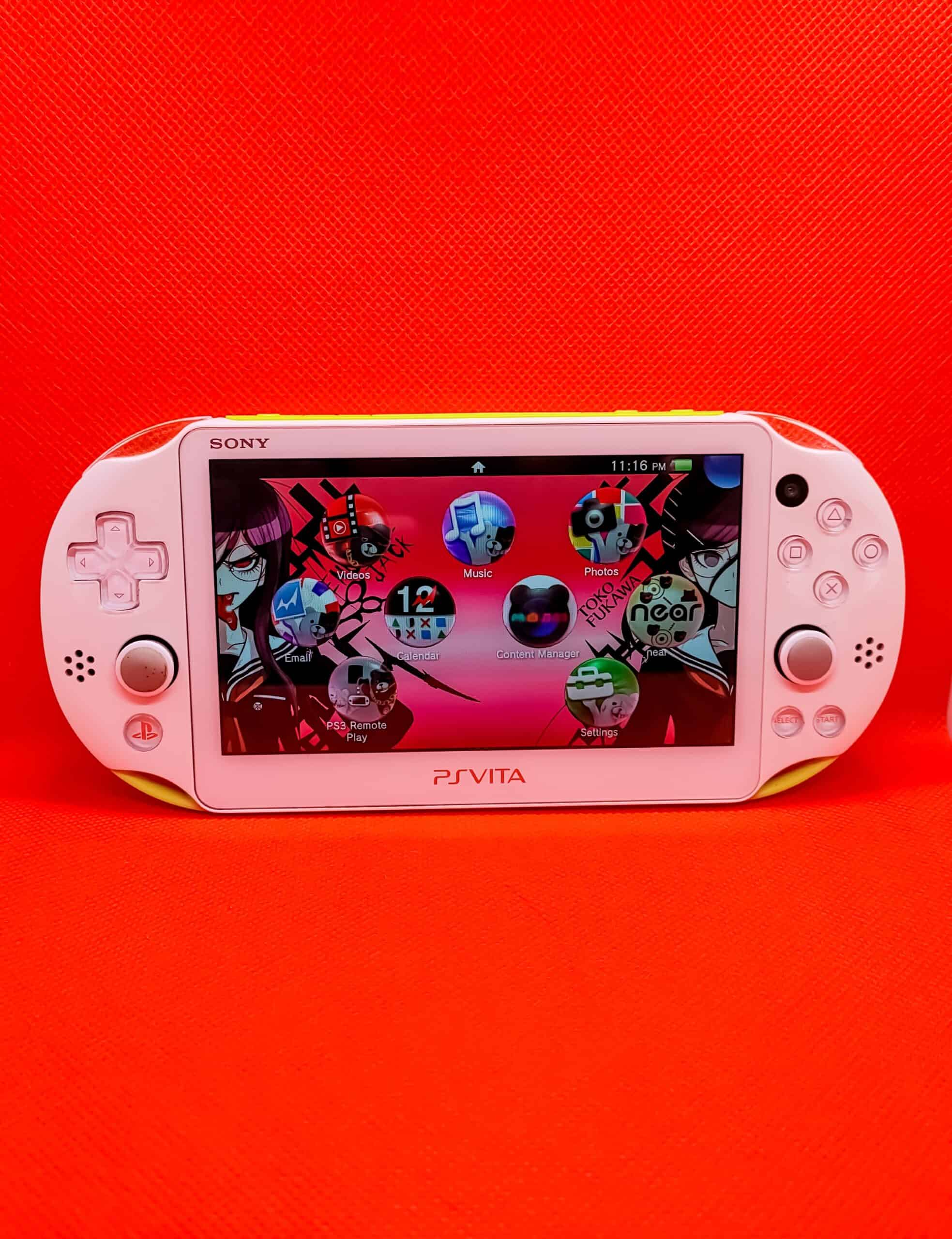For a long time, handheld gaming has been at the forefront of the video gaming world, and for good reason. The Nintendo Switch, which has been around for five years now, has sold over 112 million consoles and the Nintendo DS and the Game Boy remain the second and third-best-selling consoles of all time.
While the PlayStation Portable failed to dethrone Nintendo’s best-selling handhelds, Sony was confident their next product was the right one to take the handheld top spot for good. The successor to the PlayStation Portable, the PlayStation Vita launched in 2011 to astronomical expectations. On paper, everything looked right to tip the balance in Sony’s handheld favor, but the Vita would never truly deliver on its promise.
So, why did the PlayStation Vita fail to become the hit Sony believed it would be? Let’s take a deep dive and find out.
5 Facts About the PlayStation Vita
- It was backward compatible with the PlayStation Portable (download only).
- The 5-inch OLED screen was far better than competing Nintendo DS/3DS units.
- It also had a web browser and could make Skype calls.
- It was introduced with two touch panels and two analog sticks.
- The lack of third-party support was seen as a major reason for its failure.
Quick Facts
| Release Date | December 2011 (Japan), February 15, 2012 (U.S.) |
| Developer | Sony |
| Notable Figures | Shuhei Yoshida, Kazuo Hirai |
| Gaming Generation | Eighth Generation |
| Lifespan | 2011-2019 |
| Price | $249 |
| Units Sold | 10-15 million (estimated) |
| Popular Titles | Killzone, LittleBigPlanet, Uncharted: Golden Abyss |
The History of PlayStation Vita
The history of the PlayStation Vita can’t be told without a quick reference to its predecessor. The original PlayStation handheld, the PlayStation Portable, or PSP, was released in 2004 to compete with the Nintendo DS. It would go on to sell 80 million units, which, by itself, is a pretty sizable feat, but when compared to the DS’s 154 million units, Sony had to up the stakes with its next release.
Rumors of a new Sony handheld started in 2009 when Eurogamer heard that Sony was beginning work on a new device. These rumors would persist through 2010 and would be followed by news of development kits being sent out to developers. Even as rumors flew, Sony was tight-lipped on the future of its handheld gaming developments.
Launch
Finally, on January 27, 2011, Sony unveiled the Vita at a “PlayStation Meeting” media event in Japan. Skip ahead to June 6, 2011, as Sony would officially confirm the name “PlayStation Vita.” With the name finalized, the Vita was ready to launch and began to hit store shelves on December 17, 2011, in Japan and February 22, 2012, in both America and Europe. The console launch began with 26 titles in Japan and 25 titles elsewhere including one of its best-known games, Uncharted: Golden Abyss.
Initial sales were strong, with 300,000 units selling in Japan in the first week and 200,000 units in the U.S. in the first month. More than 1.2 million units were said to be in the hands of customers as of February 26, 2012. So far, things have been looking up for Sony.
Competition
As time wore on, Nintendo would release its 3DS handheld console in 2011 as well and would considerably outsell the Vita. Sony was able to line up support from Japanese game developers like Bandai Namco, Atlus, Koei Tecmo, and more which helped drive the business in Japan and, to a lesser extent, globally.
However, the high price of Sony’s Vita would take its toll on sales, as would the high price of its memory cards. In August 2013, Sony dropped the price of both its hardware to $199 and cut the retail price of its memory cards to address consumer concerns.
The biggest issue was software, as Nintendo had a strong lineup of first-party titles, which worked in its favor. Between Mario, Pokemon, and Animal Crossing, Sony simply couldn’t match the deep lineup even as games looked better on the Vita hardware.

Shifting Focus
As the launch of the PlayStation 4 started to take shape, Sony started to express its desire to go in a different direction with the Vita. That meant releasing fewer first-party games, and by 2014, Sony President, Shuhei Yoshida, indicated that the company would begin marketing Vita’s different uses, like PS4 Remote Play, PS3 games with PS Now, and more. The writing was on the wall that the Vita wasn’t hitting its target numbers.
As 2015 rolled around, Sony’s support for the Vita continued to diminish as mobile gaming grew far faster than anyone at Sony predicted and was chipping away at handheld console market share. Instead of focusing on smartphone gaming, Sony thought the real threat was from tablets with their bigger screens. Instead, the reverse was true as smartphones, which were about as powerful as the Vita itself, would deal a massive blow to the Vita.
During its final years on store shelves, Sony would still provide moderate support for the console, but first-party games were finished. Even with dedicated third-party developers still trying to find a niche for the Vita, Sony slammed the door on Vita’s future on September 20, 2018, announcing it would discontinue the Vita in 2019. The last Vita hardware rolled off the production line on March 1, 2019.
Goodbye PlayStation Vita
Ultimately, Vita’s failure can’t be pinpointed to one business decision or a single point in time. However, one factor that can’t be ignored is the timeline for the PlayStation Vita’s release. Sandwiched between the end of the PlayStation 3 LifeStyle and the announcement and release of the PlayStation 4, there was a major crunch on developers to make a choice as to which platform to support.
Both first and third-party developers who had limited resources had to focus on one or the other, and game developers almost universally chose the PlayStation 4. In hindsight, this turned out to be a smart decision, as the PlayStation 4 is the fourth best-selling console of all time.
Constant competitive pressure from the Nintendo 3DS didn’t help matters. Although Sony responded by lowering the price of the Vita to $199, there just wasn’t enough interest from consumers to bring about a sales bump.
After 2013, Sony refocused the Vita as a niche product and, by doing so, all but destroyed its chances for mass market success. The Vita would flounder for another few years before Sony all but gave up on the console and left it to third-party developers to carry the future until it pulled the plug.

The PlayStation Vita: Each Edition
First Edition
The original PlayStation Vita hardware was, by all accounts, very ambitious. That ambition starts with the 5-inch 960 x 544 qHD OLED capacitive touchscreen, which to this day remains an impressive display. The console featured two analog sticks, a D-pad, traditional PlayStation face buttons (triangle, circle, square, etc.), and dual shoulder buttons.
Two 0.3 megapixel VGA cameras on both the front and rear were not super game-centric but played a role in the dual purposes of the Vita overall (e.g. Skype calling). Three motion sensors were also included, with a gyroscope, accelerometer, and electronic compass.
Support for Wi-Fi, Bluetooth, and 3G connectivity all played a role in the latter years of Vita’s life in being able to access the PlayStation network. That included PSP titles that were downloadable from the PlayStation Store, which boosted the use case of the Vita a little with a slew of titles from the previous generation.
Second Edition
On October 10, 2013, in Japan and on February 7th, 2014, elsewhere around the world, Sony launched a slimmer version of the PlayStation Vita. Dubbed the PCH-2000 series, the second generation Vita was 20% thinner and 15% lighter when compared to the launch model. Perhaps the biggest change was the move from the popular OLED display to a more cost-effective LCD display which added an extra hour of battery life.
Additionally, Sony made 1GB of internal storage memory the default with the revised second edition while adding six colors total for Japan. The black and light blue models continued to be only available in North America and Europe.

The Public Response
Even though the PlayStation Vita was initially well-received by critics and video game personalities, it wasn’t all perfect. The hardware (mostly the display) was widely praised as being ahead of its time, but the size of the hardware and its high price tag were red flags right from the start. This reality must have been concerning for Sony, even as the Nintendo 3DS suffered from similar concerns over pricing and gimmicky 3D technology. Unlike Sony, Nintendo found its path through a huge library of titles that made the 3DS a must-own, something Sony failed to do, especially at launch.
Sony would fall well short of its initial sales goals to push between 30,000 and 50,000 Vita units per month for the year after launching in North America. Their worldwide goal of selling ten million units by the end of March 2013 was another big miss and may have been when Sony internally decided to refocus its marketing efforts.
In North America, it would take just around 12 months before the gaming community would start asking questions about how Sony could save the Vita. Unlike the 3DS, Sony’s promise of big software releases never really materialized, and question marks continued to form month after month as to just how dedicated Sony was to its handheld gaming efforts.
Mixed Reception
One of the first big public response concerns came out of Japan in the spring of 2013 when a Japanese poll showed that only 46% of respondents (1,500 total respondents) were “satisfied” or “very satisfied” with the Vita hardware. The same number had the same response to the software library, but the negative response to the library was also higher than that of the system.
A U.S.-based Metacritic score shortly after the hardware launch showed that out of 44 professional game critic reviews, only 9 felt the Vita was “great,” while 29 gave it a “good” score. Even as the Nintendo 3DS scored similar numbers, the difference was in the game selection, and Nintendo had Sony beat by a mile.
Retro Resurgence
To this day, the Vita has its fair share of dedicated fans, and for good reason. The hardware is beautiful, and the games that did launch were very close to console quality. Thankfully, the resurgent interest in all things retro gaming has seen new life breathed into the Vita as “what could have been?” became the story. A few years ago, you could buy a Vita for less than its original market value, but now, it’s not uncommon to see a PlayStation Vita sold for more than its original new cost.
The image featured at the top of this post is ©Hasif Collection/Shutterstock.com.

